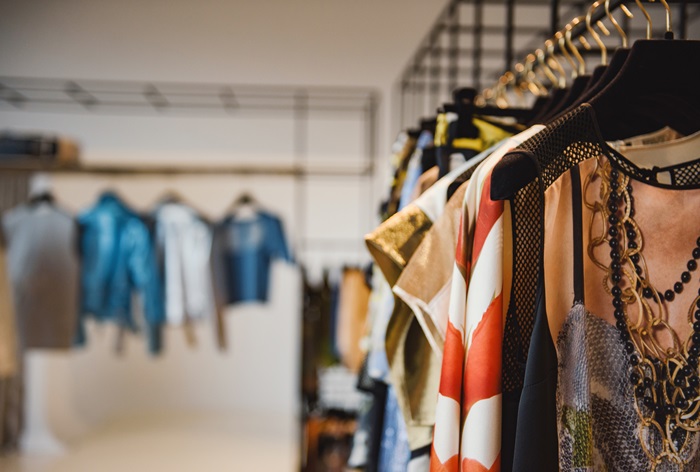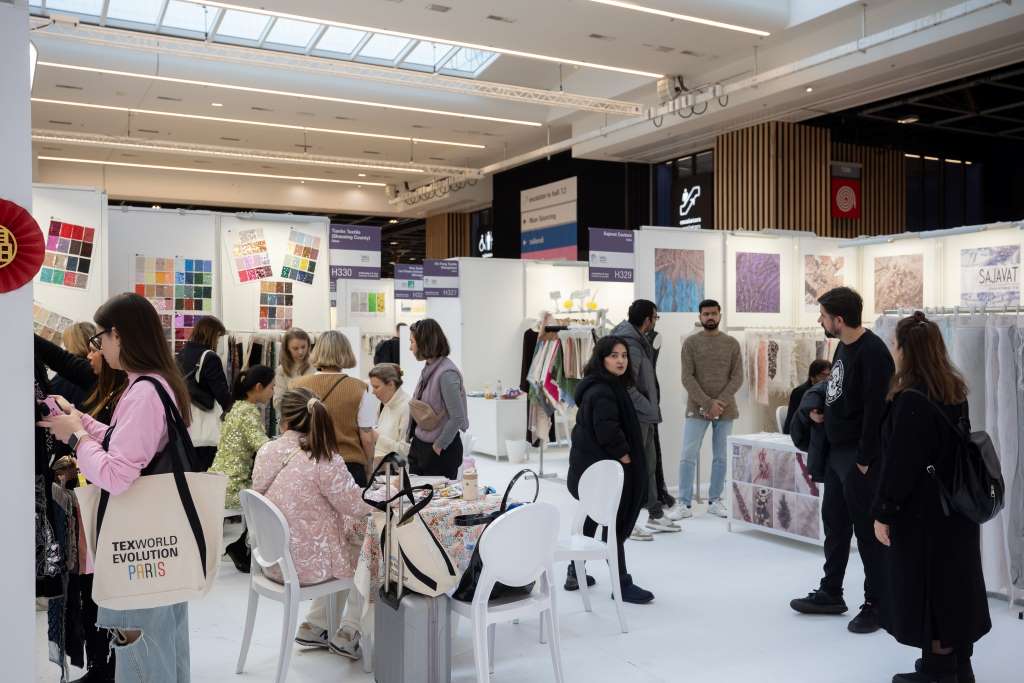FW
Comprehensive statistics by the Export Promotion Bureau (EPB) indicate, Bangladesh’s RMG exports grew by 4.97 per cent Y-o-Y to $40.49 billion during the period spanning July to April 2023-24 compared to $38.58 billion in the corresponding period of the previous fiscal
Knitwear exports from the country increased by 9.11 per cent to $22.88 billion. On the other hand, exports of woven garments increased marginally by 0.03 per cent to $17.62 billion, highlighting the sector's resilient performance.
According to Mohiuddin Rubel, Director, BGMEA, these figures demonstrate a notable growth trajectory in the Bangladesh RMG sector.
However, single-month export earnings by Bangladesh declined by 1.01 per cent to $3.29 per cent during April 2024 compared to April 2023.
Despite this minor setback, the broader picture portrays a robust and thriving apparel export sector, reinforcing Bangladesh's position as a key player in the global garment industry. The steady growth trajectory underscores the resilience and adaptability of the country's garment manufacturers and exporters, navigating through various challenges to maintain a competitive edge in the international market.
In November 2023, India exported approximately 63 million sq m of cotton woven fabrics, marking a 4.3 per cent rise from the previous month. Despite this uptick, exports showed a mild overall decrease during the reviewed period. The most rapid growth occurred in December 2022, with a 12 per cent increase month-on-month. However, from February to November 2023, exports remained relatively stagnant, with a peak of 81 million sq m in January 2023.
In terms of value, cotton fabric exports from India sharply declined to $134 million in November 2023, according to IndexBox estimates. Despite fluctuations, exports maintained a relatively flat trend overall. The highest growth rate was recorded in August 2023, with a 13 per cent increase compared to the previous month. However, from April to November 2023, exports failed to regain momentum after reaching a record high of 180 million sq m in March 2023.
Bangladesh emerged as the primary destination for Indian cotton fabric exports, accounting for 28 per cent of total exports, followed by Sri Lanka and South Korea. The average monthly growth rate in volume to Bangladesh was 1.0 per cent, while Sri Lanka experienced a slight decline of 0.8 per cent per month, and South Korea saw an increase of 2.0 per cent per month.
In terms of value, Bangladesh remained the key market, comprising 27 per cent of total exports, followed by Sri Lanka and Nigeria. While exports to Bangladesh saw modest growth, Sri Lanka experienced a slight decline, and Nigeria showed significant monthly growth of 7.0 per cent.
The majority of exports consisted of woven fabrics of cotton containing 85 per cent or more by weight, weighing not more than 200 g/sq m, which constituted 68 per cent of total exports. This type of fabric also dominated in terms of value, comprising 63 per cent of total exports. Woven fabrics of cotton weighing more than 200 g/sq m and mixed fabrics with man-made fibers held smaller shares.
Valued at $288 billion in 2023, the global plus size market is projected to surpass $501.35 billion by 2033, with a 5.7 per cent CAGR expected during this period.
According to a report by Future Market Insights, central to this growth is the body positivity movement, which champions inclusivity and encourages individuals to embrace their bodies, driving demand for fashionable plus-size alternatives. Fashion norms have evolved towards diversity, prompting designers and retailers to offer trendy solutions catering to plus-size consumers' fashion-forward tastes.
Moreover, heightened consumer awareness has fueled demand for attractive and well-fitting plus-size clothing, with individuals increasingly vocal about their preferences. However, challenges such as size discrepancies and limited retail availability hinder industry expansion, impacting the purchasing experience and overall accessibility for plus-size customers.
Despite these challenges, the plus-size clothing industry presents opportunities for innovation and expansion. Online retail expansion and customisation options are key areas of potential growth. eCommerce platforms offer a vast reach and the ability to offer diverse sizes and designs, providing a comfortable and inclusive shopping experience.
Furthermore, customisation and personalisation options allow plus-size individuals to tailor clothing to their unique body types and preferences, enhancing customer satisfaction and loyalty.
Exciting trends are reshaping the plus-size clothing market, including inclusive fashion campaigns, sustainable and ethical practices, and the rise of fashion-forward activewear. Brands are increasingly incorporating diverse body types in their marketing, promoting inclusivity and reaching a broader audience.
Additionally, there is a growing emphasis on sustainability and ethical standards, with manufacturers adopting eco-friendly materials and fair labor practices to meet consumer demand.
In terms of market dynamics, the United States dominates with a 40 per cent share, followed by China, the United Kingdom, Japan, and South Korea. Casual wear leads with a 4.8 per cent CAGR until 2033, while mid-priced segments are expected to dominate.
Vietnam's premier platform for showcasing outstanding export products, The Ho Chi Minh City Export 2024 will return from May 8 to 11, 2024 at the Saigon Exhibition and Convention Centre (SECC)
Boasting an impressive expansion with 450 booths, twice the number from its inaugural edition last year, the event will host leading export-focused enterprises across Vietnam's key industries, according to the municipal Department of Industry and Trade.
To be attended by approximately 20,000 visitors, with over 80 per cent representing industry insiders such as importers, traders, and retail chains from major markets like the US, Europe, Southeast Asia, China, Japan, and South Korea, the fair will facilitate substantial business opportunities.
The main focus on the event will be on key export categories including food, beverages, agricultural and aquatic products, woodwork, handicrafts, textiles, apparel, leather goods, footwear, handbags, rubber, plastics, electronics, and mechanics. This will empower businesses in Ho Chi Minh City and beyond to capitalise on the opportunities presented by recovering markets.
Nguyen Phuong, Director, Department of Industry and Trade, emphasises, the fair plays a pivotal role in fostering global supply chain engagement and close partnerships with foreign distribution networks. Deputy It enables businesses to stay abreast of global demand and trends, informing their development strategies, and enhancing connectivity within Vietnam and beyond, particularly in the southeastern and southwestern regions, he adds.
Various activities complementing the exhibition have been planned. These include business-to-business sessions facilitating meetings between companies and representatives of international buyers such as Central Retail and MM Mega Market, as well as major e-marketplaces like Amazon and Alibaba. These interactions aim to facilitate the expansion of quality products into global markets.
Moreover, the fair will integrate a forum focused on promoting connectivity towards green exports. It will harness digital technology to enhance the experience for both exhibitors and visitors.
In Q1FY24, the Prada Group recorded an impressive 11 per cent growth in revenue at current exchange rates, totaling €1.19 billion. This surge was attributed to the inherent strength, creativity, and dynamic appeal of the brands within the portfolio, including Prada, Miu Miu, Church's, Car Shoe, Luna Rossa, and Marchesi 1824.
Retail sales saw a substantial increase to €1.07 million, marking an 18 per cent rise Y-o-Y. This growth was fueled by both like-for-like progression and full-price volumes.
Prada brand's retail channel saw a commendable 7 per cent growth in the quarter, while Miu Miu boasting an 89 per cent Y-o-Y surge. Miu Miu's ascent was further validated by its noteworthy performance on the online fashion brand aggregator Lyst, where it surpassed Prada in searches and secured three entries in the top ten most searched products for Q1 2024.
Market-wise, Japan experienced an impressive 46 per cent growth, while the Asia-Pacific region saw a commendable 16 per cent increase, even when compared to the strong start of 2023 prompted by China's border reopening. Europe, despite being listed on the Hong Kong stock exchange, achieved an 18 per cent growth, while the Middle East and the Americas registered a 15 per cent and 5 per cent growth respectively.
Patrizio Bertelli, Chairman and Executive Director, emphasised on the group's commitment to strategic development and long-term, sustainable growth. He stressed the importance of maintaining flexibility and agility in response to evolving industry dynamics, while also highlighting the organisation's strength and the talent of its workforce.
Kim Glas, President and CEO of the National Council of Textile Organizations (NCTO), delivered a compelling message to the US Trade Representative’s Office (USTR), emphasizing the urgent need for strategic trade and investment policies to support the growth and resilience of the domestic textile industry.
Speaking at a USTR hearing focused on supply chain resilience, Glas underscored the industry's concerns regarding China's pervasive influence through illicit trade practices.
Highlighting the integral role of the domestic textile sector in national security and public health, Glas outlined the detrimental effects of unchecked foreign trade practices, inadequate customs enforcement, and misguided policy proposals.
She pointed to the closure of 14 US textile factories and the loss of an estimated 100,000 jobs in recent months, attributing this decline to unfair competition from China and other Asian countries.
Of particular concern are China's exploitation of subsidized inputs, including those produced through forced labor in Xinjiang, and the prevalence of low labor and environmental standards. Glas urged immediate action from Congress and the Biden administration to address these issues, including closing the de minimis tariff loophole and enhancing customs enforcement.
Glas also emphasized the importance of preserving yarn forward rules of origin, rejecting proposals to expand product coverage under the Generalized System of Preferences (GSP), and implementing measures to incentivize domestic production.
She warned of the severe consequences of inaction, stressing the need for a proactive approach to safeguarding domestic manufacturing against the strategic ambitions of geopolitical rivals like China.
Techtextil trade fair in Frankfurt witnessed the commendation of six pioneering young engineers by the Chairman of the Walter Reiners Foundation of the VDMA, Peter D Dornier. Awards were distributed in categories of bachelor/project theses and diploma/master theses, with a notable emphasis on promotion and sustainability.
Anna Markic, from Reutlingen University, clinched a 3,000 euro sustainability prize for her thesis on carbon fiber recycling. Meanwhile, Mark Zenzinger of Albstadt-Sigmaringen University secured a 3,000 euro promotion award for his work on automating the production process of welded textile hard goods.
Further accolades included Lena Fink's promotion award for simplifying braiding machine maintenance and Fabio Bussmann's Master's thesis analyzing life cycle assessments of geotextile semi-finished products.
Katharina Maria Ernst's sustainable process development for chitosan fibers earned her recognition, while Lennart Hellwig’s exploration of machine learning in nonwovens plants rounded off the awards.
These initiatives underscore the industry's commitment to innovation and sustainability, driving forward technological advancements in textile engineering.
For the third time, Teen clothing retailer rue21 has filed for Chapter 11 bankruptcy protection as the company aims to close all 540 of its stores and offload its intellectual property.
Despite efforts to find a buyer for its business, rue21 found no takers willing to offer more than what could be gained through liquidating inventory in ‘going out of business sales and shuttering its stores, as stated in court documents filed in Wilmington, Delaware.
Based in Warrendale, Pennsylvania, rue21 specialises in affordable fashion for teenagers and young adults. With approximately 4,900 employees and $194.4 million in debt, the company's struggles are evident.
Once boasting 1,000 stores across US malls at its peak, rue21 had to close around 400 stores during its 2017 bankruptcy, which helped it reduce $700 million in debt. However, the company continued to grapple with challenges post-bankruptcy, particularly with the surge in online shopping exacerbated by the COVID-19 pandemic.
In 2022, rue21 sought additional capital to address these issues, securing a $25 million investment from its existing lenders. As a result, these lenders now hold an 80 per cent stake in the company.
Moving forward, rue21 plans to sell its brand and intellectual property separately from its store closure proceedings. Gordon Brothers has been enlisted to assist with the liquidation sales.
Buoyed by a 5.7 per cent increase in full-price sales, slightly exceeding the anticipated 5 per cent rise, Next Plc reported robust first-quarter sales. The company attributed this growth to easing price pressures, which spurred consumer interest in purchasing clothing and footwear.
Despite this positive performance, Next maintained its previous outlook for the fiscal year, projecting a pre-tax profit of £960 million ($1.2 billion) and a 6 per cent increase in group sales. However, it anticipates a weaker second quarter due to unexpectedly cold weather conditions, which may impact sales.
As a key player in the fashion and homewares industry with numerous stores across the UK and a substantial online presence, Next's performance is closely monitored as a barometer of broader retail trends. Simon Wolfson, CEO has consistently surpassed expectations, prompting the company to revise its outlook upwards five times last year amid growing demand.
Analysts have generally viewed Next's first-quarter results positively, considering the challenging weather conditions. While the cold April weather has posed a challenge, the company's solid performance reflects consumer confidence buoyed by easing inflation, particularly in clothing and footwear prices, which have entered deflation for the first time since January 2022.
However, the outlook for the second quarter is more cautious, with Next anticipating a slight decline in sales, attributed in part to tougher comparisons with the unusually warm weather experienced during the same period last year
Renowned British luxury brand celebrated for its exquisite handbags, Mulberry reported a 4 per cent dip in annual sales during FY24, echoing the concerns of other upscale retailers about a slowdown in affluent consumer spending.
Thierry Andretta, CEO, acknowledged the broader challenges facing luxury markets, particularly in the UK and Asia, where Mulberry felt the pinch. However, the company reported a sales boost in the US market, where increased brand recognition contributed to positive trading.
Despite a 7.2 per cent boost in international sales, the UK market experienced a 3.2 percent downturn in retail sales for the fiscal year ending in March. Reflecting on the hurdles faced, Andretta highlighted the absence of VAT-free shopping in the UK, attributing it to impacting not just retail but also hospitality, leisure, and tourism sectors. This setback was evident in the ‘golden quarter,’ encompassing the crucial Christmas shopping period, where Mulberry saw a 9 per cent sales decline.
Despite these challenges, Mulberry remains committed to its vision of global sustainable luxury. Founded in 1971 by Roger Saul and Joan Saul, the brand maintains its resilience amidst the turbulent market conditions, focusing on strategic execution to secure future growth.












